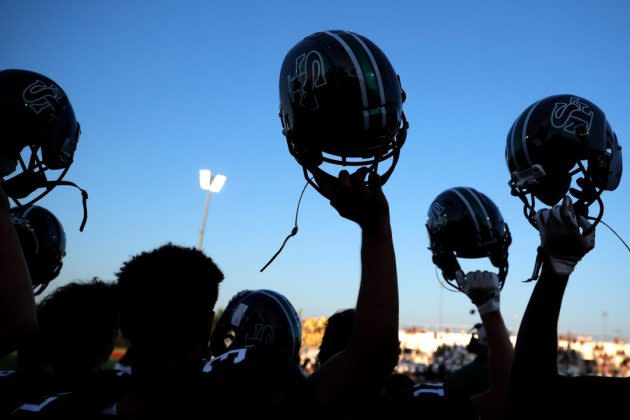The Overlooked Revolution in NIL Rights: High School Sports

Today’s guest columnists are professor Adam Epstein and associate professors Nathaniel Grow and Kathryn Kisska-Schulze.
The college sports industry has witnessed significant change since the NCAA first allowed student-athletes to profit from their name, image and likeness (NIL) rights in 2021. By some estimates, college athletes are now generating just under $1 billion per year in the unevenly regulated endorsement-contract marketplace, leading to calls for Congress to enact a federal law to establish a national collegiate NIL framework.
More from Sportico.com
Overtime Basketballers Sue NCAA After College Eligibility Denied
NCAA's NIL Answer Is Not in Congress-It's in Athletes' Rights
While the emergence of NIL opportunities at the college level has garnered considerable public attention, there’s been less attention on the impact NIL is having on an even more bedrock level of athletic competition: high school sports.
Over the last two-plus years, more than half of all U.S. state high school athletic associations have begun to allow student-athletes residing within their borders to profit from their NIL, placing those high school students on somewhat equal footing with their collegiate counterparts. However, most of the state athletic associations that allow students to pursue NIL opportunities have not fully considered the meaningful differences that exist between the high school and college student-athlete populations. Nor have they worked with their state legislatures to enact the sorts of additional legal protections that this younger cohort of student-athletes requires.
State athletic associations that allow high school athletes to profit from their NIL have generally done so to promote economic fairness and cultivate the potential educational opportunities that such deals can afford students (such as teaching them how to build a brand and develop business relationships). As a result, many high school athletes have begun signing their own endorsement contracts over the last two years—deals that have occasionally reached into the six or seven figures. Additionally, some households have relocated to different states, or switched from public to private schools that are not bound by high school athletic association bylaws, in order to allow their children to pursue these potentially lucrative opportunities.
Unfortunately, the states that have extended NIL rights to high school athletes have failed to implement adequate protective measures to safeguard this uniquely vulnerable population. Most high school athletes are younger than 18, the age of legal majority. Thus, many will not only lack the legal capacity to sign fully enforceable contracts but may also be at heightened risk of being taken advantage of financially by their parents, guardians, and advisors.
Former Olympic gymnast Dominique Moceanu provides a cautionary tale of the financial harm that can befall high-profile athletes who are not yet adults in the eyes of the law. After winning a gold medal for Team USA as a teenager at the 1996 Summer Olympics, Moceanu reportedly earned approximately $1 million dollars in endorsement income, only to discover less than two years later that her parents had squandered all of her money.
To help protect young entertainers against this type of negative financial outcome, a few states, including California (via its Coogan Law, named after child actor Jackie Coogan) and New York, have enacted laws requiring that a portion of any income earned by children working in the entertainment industry be placed in a blocked trust account until they reach the age of 18. Unfortunately, the laws in these states were drafted in a relatively narrow manner, generally applying only to child entertainers, such as actors and musicians, rather than high school athletes earning money through endorsement contracts.
As a result, the growing number of high school students entering NIL deals currently do so without any form of legal protection to ensure that their earnings are safe from unscrupulous parents or guardians—or their own lack of financial acumen—until they reach adulthood.
Our recent research on this topic suggests that legal steps should be taken to rectify this oversight. In those states where high school athletes are currently allowed to enter NIL deals, state legislators should enact laws requiring a portion of these earnings be set aside until the student reaches the age of 18. Meanwhile, state high school athletic associations that have yet to permit high school athletes to enter endorsement contracts should consider waiting to do so until adequate legal measures have been put in place to protect these student-athletes’ long-term interests.
In this way, states can best ensure that the emergence of NIL opportunities at the high school level provides student-athletes with its intended benefits, and not an all-too-early, painful lesson in financial exploitation.
Adam Epstein is a professor in the Department of Finance and Law and Central Michigan University. Nathaniel Grow is an associate professor of Business Law & Ethics at Indiana University’s Kelley School of Business. Kathryn Kisska-Schulze is an associate professor of Business Law in the Wilbur O. and Ann Powers College of Business at Clemson University.
Best of Sportico.com
